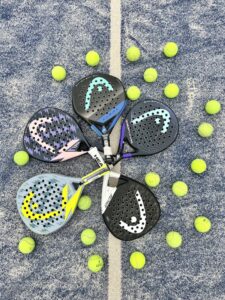Unlocking the Secrets of a Padel Court Diagram: Improving Your Game with Visual Analysis
3 min read
Unlocking the Secrets of a Padel Court Diagram: Improving Your Game with Visual Analysis
As a padel enthusiast, I’ve always believed in the power of visual analysis when it comes to improving my game. One of the most valuable tools in my arsenal is the padel court diagram. This simple yet powerful diagram has helped me understand the strategic intricacies of the game and unlock secret techniques that have taken my gameplay to the next level.
So, what exactly is a padel court diagram? Well, think of it as a game plan laid out before you. It’s a visual representation of a padel court, complete with all the markings and dimensions. By studying this diagram, you can gain a deeper understanding of court positioning, shot selection, and the tactical choices that can make or break your game.
Let’s dive into the key features of a padel court diagram and how they can help you improve your game:
1. Court Dimensions
The first thing you’ll notice on a padel court diagram are the court dimensions. Understanding the size and shape of the court is crucial as it dictates your movement and shot selection. By studying the diagram, you can visualize the court’s boundaries and plan your moves accordingly. For example, you’ll know how close to the side walls you can hit your shots, or how much room you have to maneuver near the net.
2. Service Boxes
The next important feature is the service boxes. These are the areas where you serve the ball from, and where your opponents must return the serve. By studying the diagram, you can identify the optimal locations to serve from, based on your opponents’ weaknesses or your preferred strategies. For example, you might discover that serving wide can push your opponents to the edges of the court, giving you a strategic advantage.
3. Net and Central Zone
The net and central zone are the heart of the padel court. By understanding the positioning of these key areas, you can enhance your game dramatically. The diagram will show you the net height and the width of the central zone. This information can guide your approach shots, net play, and volley techniques. For example, you can strategically target the central zone with drop shots to keep your opponents off balance.
4. Back Walls and Side Walls
The back walls and side walls are unique elements of padel that separate it from other racket sports. By analyzing the diagram, you can uncover strategies to effectively use these walls to your advantage. For example, you can learn how to hit shots that ricochet off the walls, making them difficult for your opponents to return. Understanding the angles and bounces off these walls grants you a competitive edge.
5. Player Positions
Lastly, a padel court diagram allows you to visualize both yours and your opponents’ ideal positions on the court. This information can help you understand the best spots to cover during different stages of the game. By studying the diagram, you can anticipate your opponents’ shots and plan your positioning accordingly, giving you a significant advantage in terms of court coverage and shot selection.
Now that you understand the power of a padel court diagram, it’s time to put it into practice. Grab a diagram, study it closely, and start analyzing your game. Remember, mastery of this visual tool takes time and practice, but the rewards are well worth it. Your understanding of the game will improve, and your strategic choices will become more refined.
So, go ahead, unlock the secrets of the padel court diagram and watch your game soar to new heights. Good luck and enjoy the journey!







